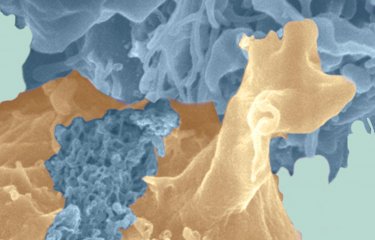After HTLV-1, the first human retrovirus isolated in 1980 in the United States, then HTLV-2, discovered in 1982, and finally HIV-1 and HIV-2, which cause AIDS, isolated at Institut Pasteur in 1983 and 1985, a fifth human retrovirus, HTLV-3, has just been discovered by researchers at Institut Pasteur. Its simian equivalent had been known for about ten years, and researchers were looking for this virus in humans. While this discovery, published in Retrovirology, concludes a prolonged scientific quest, the HTLV-3 virus, and particularly its potential link to an illness in humans, is still basically unknown to science.
Press release
Paris, may, 2005
HTLV-1 was the first human retrovirus ever discovered. We know now that between fifteen and twenty million people are infected in the world. Only 5 to 10% of them, however, are at risk for contracting a very serious related disease, adult T-cell leukemia/lymphoma, which gave its name to the virus (Human T-cell Leukemia/lymphoma Virus) or a chronic neuromyelopathy called "tropical spastic paraparesis."
Since then, a second HTLV virus (HTLV-2) has been isolated in humans. The simian equivalents of these retroviruses have been extensively studied, and three groups of "STLV" (S for Simian) viruses are known in monkeys: STLV-1 (including the ancestors of HTLV-1), STLV-2 (close to HTLV-2), and STLV-3 (for which no human equivalent was known until now).
During the last few years, a great number of STLV-3 viruses have been discovered in monkeys of various countries in East, Central, and West Africa, in very diverse habitats, from savannah to forest. This widespread, diverse distribution suggested the likelihood of an equivalent virus in humans.
Thus, the team led by Antoine Gessain, head of Institut Pasteur’s Epidemiology and Physiopathology of Oncogenic Viruses Unit, dedicated to the study of HTLV-1 and 2 retroviruses, as well as inter-species transmissions, has actively conducted epidemiologic studies on these two viruses, mostly in Africa, in order to try to isolate a third related virus. This endeavor was technically difficult, since, obviously, there are no specific detection tools available for unknown viruses. The Institut Pasteur researchers, in collaboration with Alain Froment, physician-anthropologist at IRD, eventually managed to detect the HTLV-3 virus and partially characterize it at the molecular level from a blood sample of a person living in Central Africa, and they suggest that "HTLV-3 may be present throughout the African continent."
This new human retrovirus is still basically unknown to science: We do not know its distribution, carriers, molecular properties, or possible link to an illness. According to Antoine Gessain, "Based on the major pathologies caused by most other human retroviruses, it now seems important to conduct studies on HTLV-3 and to measure its potential impact on human health."
Sources
" Discovery of a new human T-cell lymphotropic virus (HTLV-3) in Central Africa ". Retrovirology, 9 mai 2005.
Sara Calattini (1), Sébastien Alain Chevalier (1), Renan Duprez (1), Sylviane Bassot (1), Alain Froment (2), Renaud Mahieux (1), Antoine Gessain (1)
1 Unité d’Epidémiologie et Physiopathologie des Virus Oncogènes, Institut Pasteur, Paris
2 Laboratoire ERMES, IRD (Institut de Recherche pour le Développement), Orléans
Online article
http://www.retrovirology.com/content/pdf/1742-4690-2-30.pdf
Contact presse :
Institut Pasteur - Press Office
Nadine Peyrolo
01 44 38 91 30 - npeyrolo@pasteur.fr
Corinne Jamma
01 40 61 33 41 - cjamma@pasteur.fr



